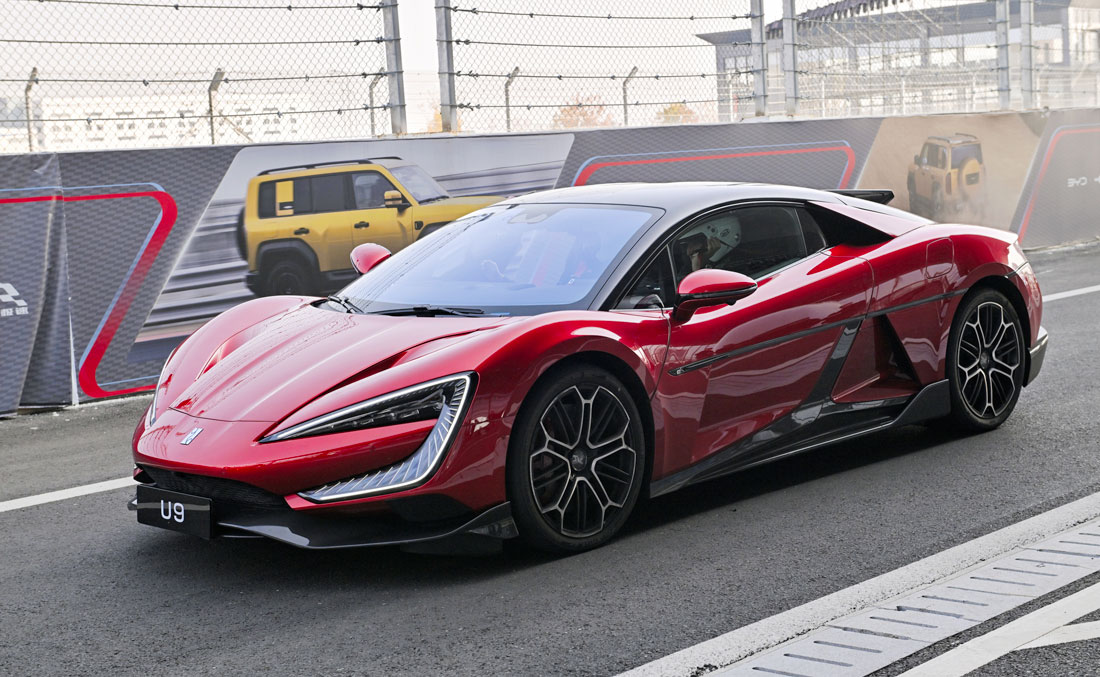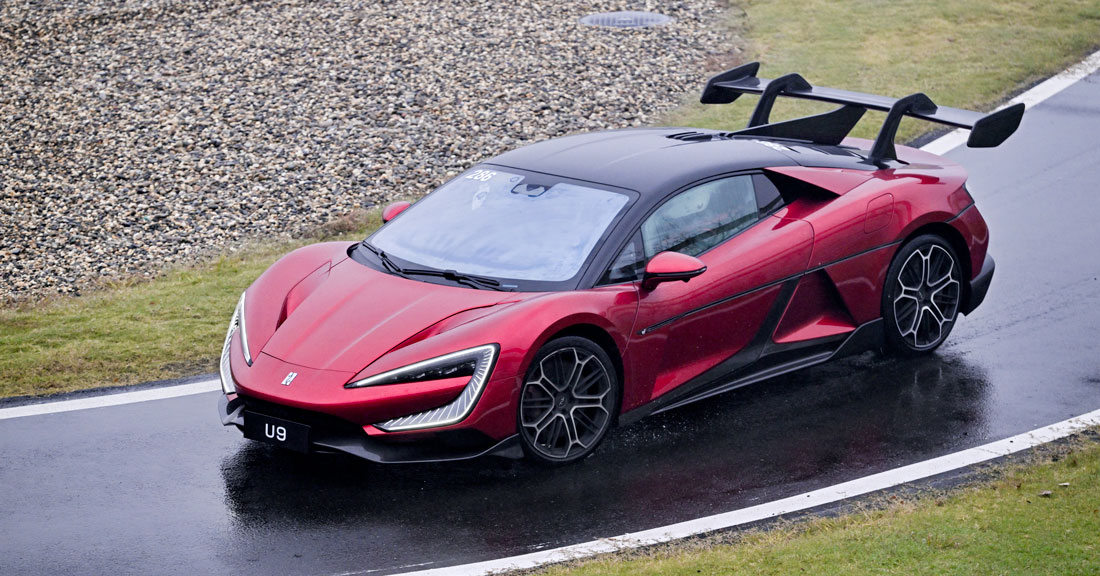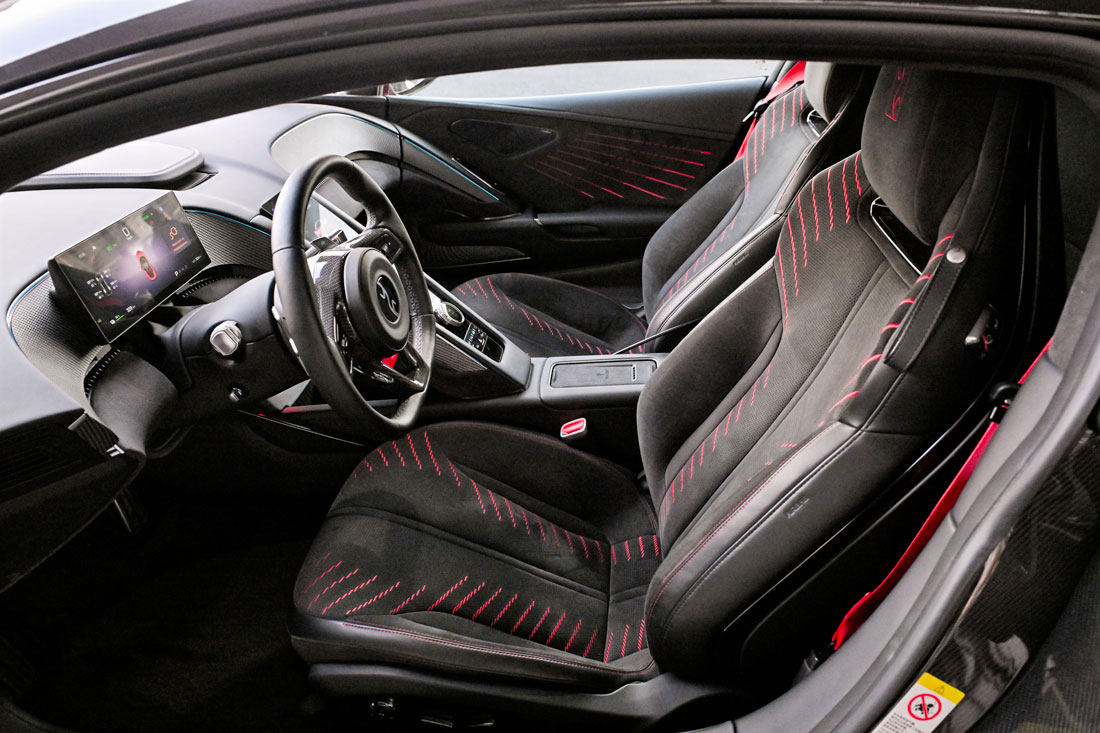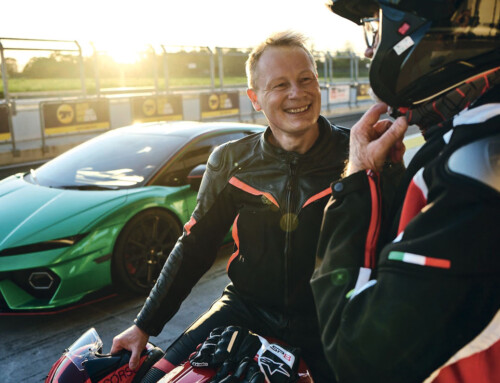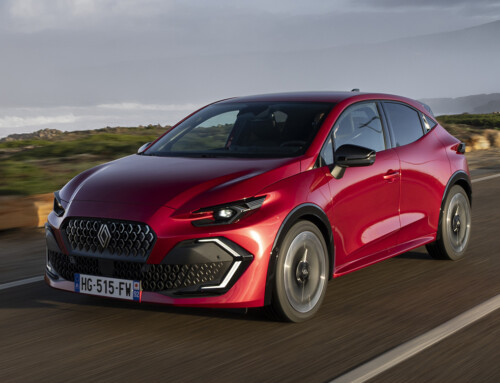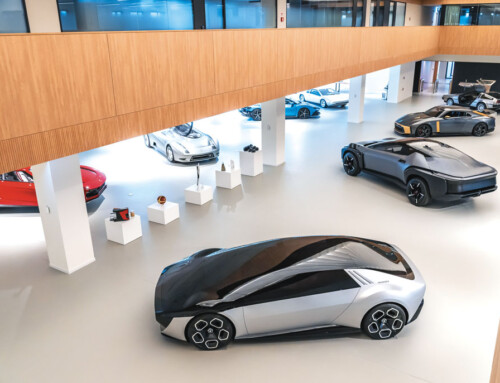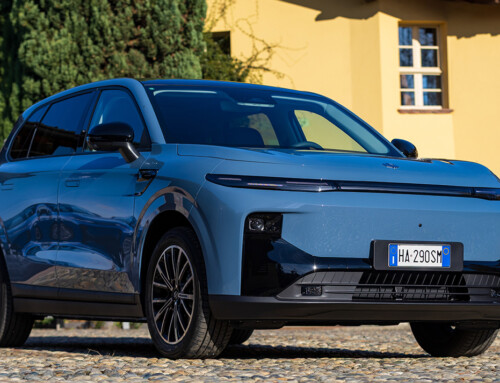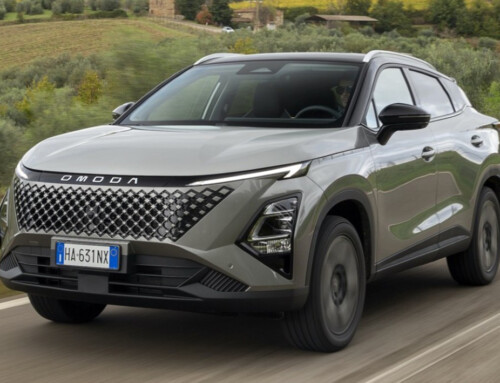The YangWang U9 is one of the cars that has sparked the most discussion in the last year. Fresh from records at the Nurburgring for the electric car category with a time of less than 7 minutes and a world speed record, with a top speed of 496.22 km/h, we had the opportunity to test it, in its less powerful variant (if we can say so of a 1,300 hp car) on the BYD ZhengZhou track.
Aesthetically, BYD’s designers have done a great job of merging form and function. All the lines of the bodywork meet specific aerodynamic needs, without neglecting the aesthetic aspect. On the outside, the aerodynamic appendages dominate, which are expressed in the presence of a large splitter in the front area and a large rear wing, which is offered as an option. The self-opening doors lift to give access to a passenger compartment inside which the level of perceived quality is very high, thanks to a careful choice of materials for the various upholstery. Here, moreover, the technological contents are expressed in the presence of two large screens positioned on the dashboard with instrument panel and infotainment functions.
“For Yangwang, the inspiration comes from Chinese culture,” explains Wolfgang Egger, Design Director at BYD. “The shapes refer to the artistic stylistic features typical of Asia, all united by a wide use of technological elements such as the headlights which, both at the front and at the rear, contribute to giving the U9 a strong stylistic identity and making it perfectly recognizable in a segment, that of supercars, in which the character of a car is expressed precisely with style, even before with performances.”
Between the curbs the U9 is fast, although those expecting a car as sharp as a blade may be a little disappointed. The U9, in fact, is very fast, but the rather filtered steering and a certain tendency to roll make the driving dynamics less extreme than you would expect from a car with over 1,000 hp.
The exclusive interview with Wolfgang Egger will be published in Auto&Design n° 276, to be released in January 2026

